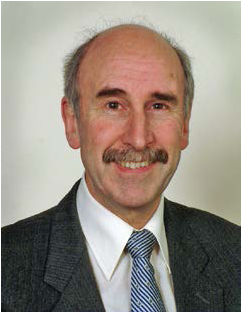
The French authorities are restricting individual vehicle use in Paris to alternate days in order to mitigate an air pollution episode caused by the recent anticyclonic weather which has given much of western Europe settled and sunny conditions over the past week. The motor industry is reported as dismissing the impact of road vehicles as a causal factor. So what are the facts?
There are many pollutants in urban air, but one, referred to as particulate matter (PM), stands out as responsible for most of the adverse effects on public health. PM includes tiny airborne particles arising from a wide range of sources that are measured by filtering them out of the air and weighing the mass collected on the filter (or by related automated methods). The only classification used in regulations is according to particle size: particles smaller than 2.5 micrometres are called PM2.5 and those below ten micrometres are PM10. Exposure to PM is associated with increased risk of both respiratory and cardiovascular disease, which manifests itself both as more deaths and hospital admissions on high pollution days, and a loss of life expectancy amounting to about six months for each person averaged across the entire UK population, equivalent to 29,000 premature deaths each year.
The key to developing cost-effective measures to reduce public exposure to PM is knowledge of the contribution that different sources make to the concentrations measured in the air, a scientific task known as source apportionment. This has been a very active area of air pollution research internationally, with the University of Birmingham being a major player. This task is more difficult than might appear at first sight for a number of reasons. If high-quality data were available on all the emission sources, then combining this with meteorological data and use of sophisticated dispersion models would give a good estimate of the concentration in air from each source. Unfortunately, though, this method is of limited value, as knowledge of emissions of particles from some sources is very poor (eg, woodsmoke) or non-existent (eg, road dust), and a large proportion of the mass of particles is not directly emitted but forms in the atmosphere from the oxidation of trace gases such as sulphur dioxide and nitrogen dioxide by processes which are challenging to simulate reliably. Consequently, the best knowledge of source apportionment is derived from using extensive measurements of the chemical composition of airborne particles (which are source-dependent) in statistical models using methods generically referred to as receptor modelling.
The application of receptor modelling methods to PM2.5 in London in the winter of 2011–12 revealed contributions from road traffic (16 per cent), woodsmoke (four per cent), sea salt (seven per cent), coal smoke (two per cent) and various minor emission sources (ten per cent in total), with the largest contributions from sulphates (14 per cent), nitrates (38 per cent) and oxidised organic compounds (9 per cent). The situation in Paris is likely to be broadly similar, although more of the French vehicle fleet runs on diesel fuel (which is dirtier than petrol) and reported woodsmoke concentrations are higher than in London. Concentrations of nitrates are usually increased disproportionately during high pollution episodes.
So, what can be achieved by reducing the road traffic? Reducing traffic volumes will not only cut the exhaust emissions directly, but also indirectly by smoothing the traffic flow and cutting the time that vehicles spend waiting in congestion. However, this will not deliver a 50 per cent reduction in PM concentrations in the air, and even in that part of PM arising from road traffic, as the pollution level arises from the sum of local and regional emissions, with upwind areas many miles away contributing to local concentrations. As the data from London show, nitrates contribute more to PM2.5 than particles directly emitted from traffic. Reducing traffic will cut emissions of the NOx gases which are the precursor of nitrate particles, but the conversion into nitrate is relatively slow and the impact of an emissions reduction in central Paris will be very modest. The introduction of the Congestion Zone in central London caused an initial reduction in traffic, but the benefits for air quality were barely measurable for these reasons.
The main lesson to be learned is that short-term abatement measures are generally too late and too small to impact significantly on air pollution episodes of this type, and if society is serious about banishing periods of poor air quality, substantial and permanent emissions reductions addressing all major sources are the only way forward.
Roy M Harrison
Professor of Environmental Health, School of Geography, Earth and Environmental Sciences